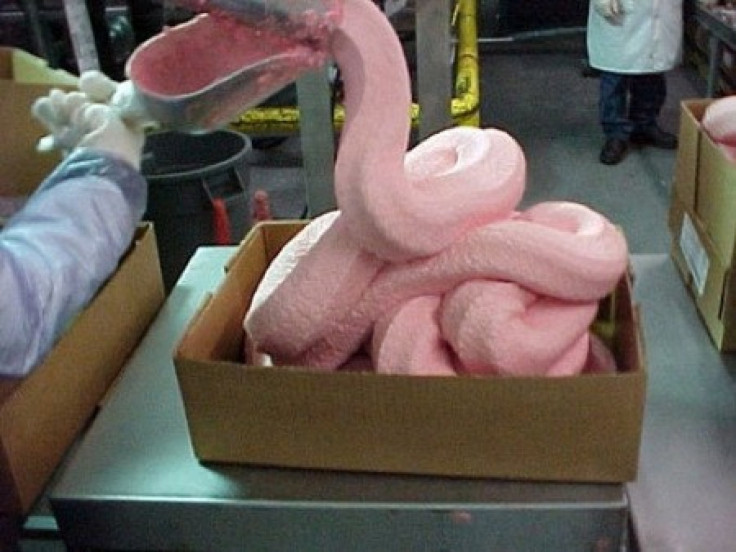Pink Slime In Schools? Government Allowing Schools To Opt Out Of Controversial Beef Filler

School districts will have the opportunity to opt out of the ammonia-treated beef-filler commonly referred to as pink slime.
Under the change, a school can choose between 95 percent lean beef patties made with pink slime or less bulky beef without it, reported the Associated Press. However, the change will not begin immediately because of existing contracts.
Pink slime is made from left-over fatty bits of beef. They are heated to approximately 100 F and spun over and over until most of the fat his removed. The beef trimmings are washed in ammonium hydroxide in order to kill bacteria. Then the beef is compressed into blocks in ground meat.
It sounds disgusting, said Dr. Marion Nestle, a professor of nutrion and food studies at NYU, reported CBS. A lot of people have been writing about it. Therefore, more people know about it, therefore more people are queasy about it, particularly when you start thinking about how this stuff turns up in school lunches.
The food is not listed as a labeled ingredient on food labels so there are no precise numbers to determine how many companies use pink slime.
Amid criticisms over social media, the U.S. Department of Agriculture announced on Thursday that, starting in the fall, schools involved in the national lunch program can elect not to include the substance in their food.
In recent years, many issues with broad interest have come to the forefront due to social media, reported CBS.
What's happening is that the channels whereby this flood can go down this hill have expanded, said Marc A.Smith, director of the Social Media Foundation, according to CBS. The more there are things like Twitter, the easier it is for these powder kegs to explode.
While the USDA said the filler is safe for consumption, the Depart of Agriculture said they are responding to concerns from schools. However, the USDA wanted to reassure parents that the pink slime is not harmful to anyone.
All USDA ground beef purchases must meet the highest standards for food safety, agency spokesman Aaron Lavallee said in an email, according to CBS. USDA has strengthened ground beef food safety standards in recent years and only allows products into commerce that we have confidence are safe.
Criticism over pink slime first came to light when it was revealed that McDonald's had been using the ingredient in their beef patties.
At the beginning of 2011, we made a decision to discontinue the use of ammonia-treated beef in our hamburgers, Todd Bacon, senior director of quality systems for McDonald's, said in a statement, as previously reported. This product has been out of our supply chain since August of last year. This decision was a result of our efforts to align our global standards for how we source beef around the world.
© Copyright IBTimes 2024. All rights reserved.











